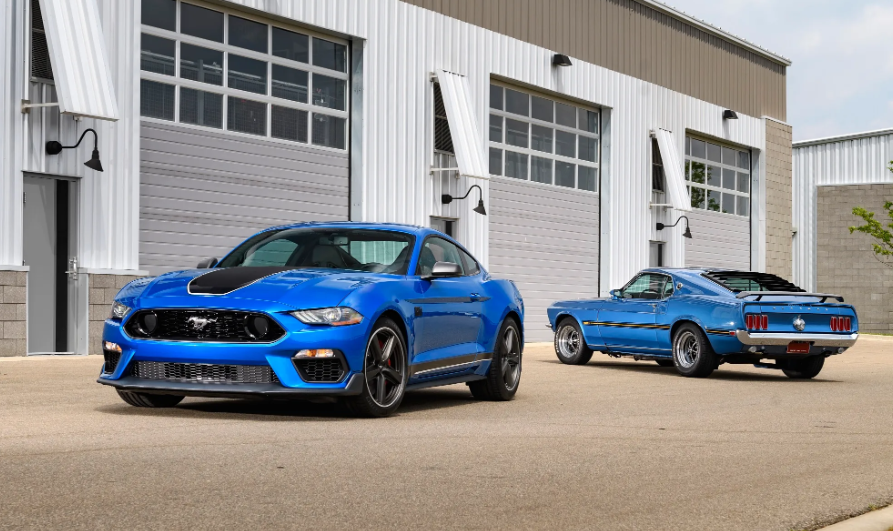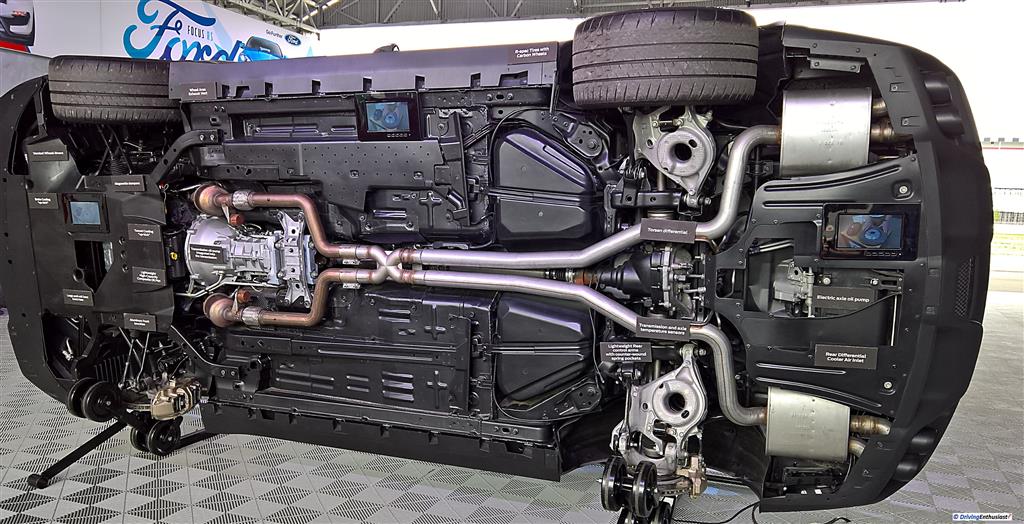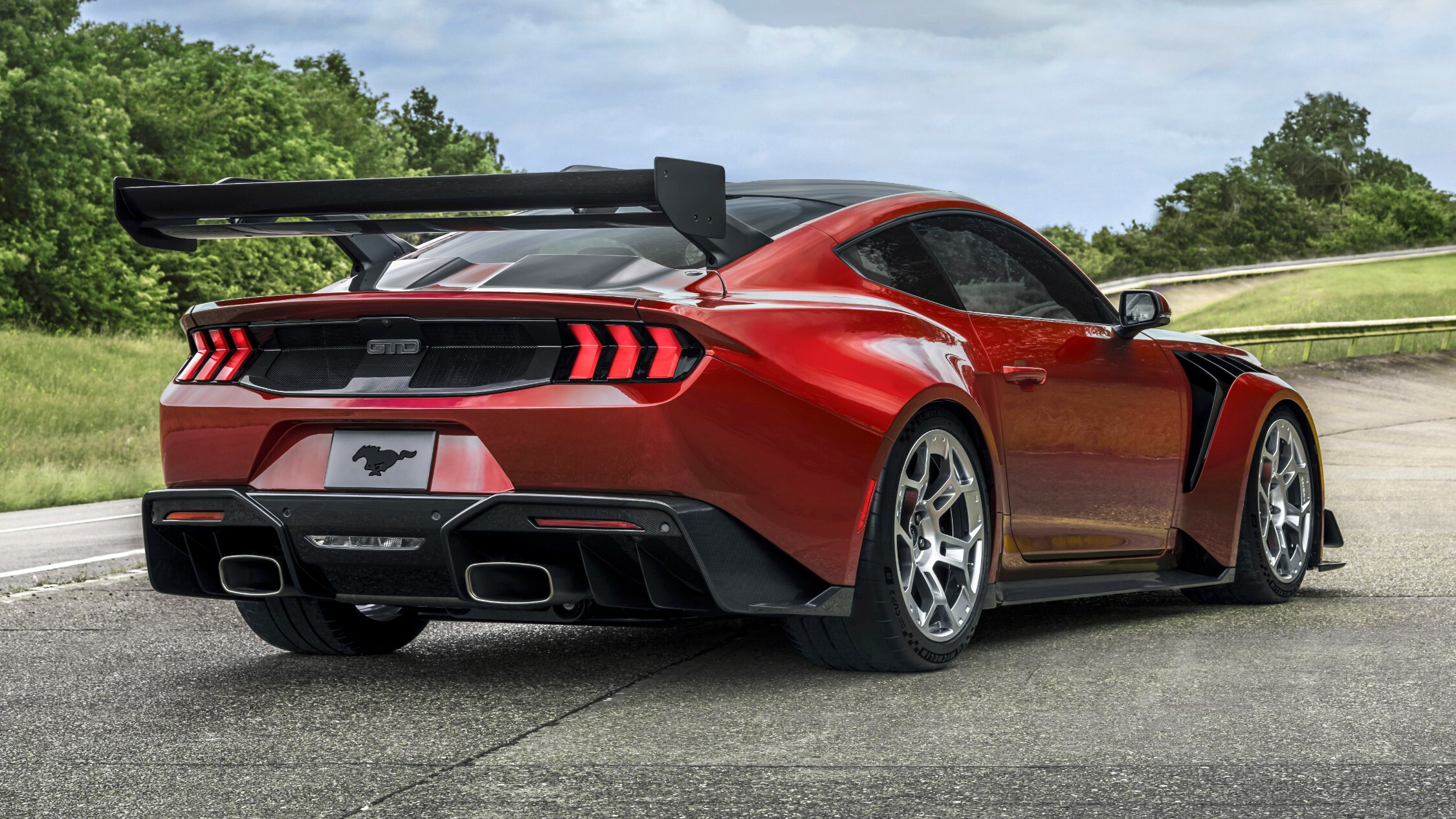The Ford Mustang has been a symbol of American muscle for over six decades. Whether you’re an automotive enthusiast, a novice car buyer, or someone considering owning a Mustang, one question that may have crossed your mind is: Are Mustangs rear-wheel drive? This question is central to understanding the Mustang’s dynamic performance, driving experience, and its legacy.
In this detailed guide, we will not only answer this question but also explain why rear-wheel drive is such a critical aspect of the Mustang’s identity and performance.

Contents
What Is Rear-Wheel Drive?
In a RWD configuration, the engine generates power that is transmitted to the rear wheels of the car, which in turn propels the vehicle forward. The front wheels are responsible solely for steering, while the rear wheels handle the vehicle’s propulsion.
This is in contrast to front-wheel-drive (FWD) systems, where the front wheels both steer and drive the vehicle. RWD has been a common choice for performance cars due to its superior handling dynamics, particularly when it comes to accelerating and cornering.
A Brief History of the Ford Mustang and its Rear-Wheel Drive Layout
The Ford Mustang made its debut in 1964, a time when performance cars were gaining popularity, and the American muscle car era was beginning. The original Mustang was designed to appeal to a broad market, combining the thrill of a performance vehicle with the practicality of a more affordable car.
From the beginning, Ford chose a rear-wheel-drive layout for the Mustang. This choice was influenced by several factors, including the desire to create a car with better weight distribution and enhanced performance characteristics. The decision to make the Mustang rear-wheel drive was not just about performance – it also set the vehicle apart from other cars of its time, many of which featured front-wheel-drive layouts.
Over the decades, Ford has consistently stuck to this rear-wheel-drive configuration, even as other automakers began offering alternative drivetrain layouts in their performance models. The RWD setup allowed the Mustang to deliver the thrilling, hands-on driving experience that it became known for, especially as newer, more powerful engines were introduced.
Why Is the Ford Mustang Rear-Wheel Drive?
The rear-wheel-drive (RWD) configuration is a defining feature of the Ford Mustang, contributing significantly to its legendary performance and handling. Let’s explore the reasons why Ford has stuck with this drivetrain choice across generations of Mustangs.
1. Performance and Power Delivery
Rear-wheel drive provides significant performance advantages, especially in a high-power car like the Ford Mustang. The layout ensures that the vehicle’s power is transmitted to the rear wheels, which pushes the car forward in a more balanced and stable manner.
When a car accelerates, the weight of the car shifts to the rear. In a rear-wheel-drive vehicle, this shift improves traction at the rear wheels, allowing the car to maintain better grip and avoid wheel spin during hard acceleration. This is particularly useful in performance cars like the Mustang, where acceleration and handling are crucial.
In contrast, front-wheel-drive cars often struggle with traction during acceleration because the weight shifts away from the front wheels, leading to potential understeer or loss of control.
2. Improved Handling and Driving Dynamics
Rear-wheel drive provides better handling characteristics, particularly in performance and sports cars. By separating the tasks of steering (front wheels) and power delivery (rear wheels), RWD vehicles like the Mustang enjoy greater steering precision and a more engaging driving experience.
In a rear-wheel-drive vehicle, the car’s handling is more predictable, particularly during high-speed cornering. Since the rear wheels are doing most of the driving work, the front wheels can focus purely on steering, reducing any conflicts between the two functions. This creates a more balanced and responsive feel on the road, making it easier to push the car to its limits in a controlled manner.
Moreover, RWD vehicles tend to have a more “tail-happy” nature, which means they can be more fun to drive for those who enjoy spirited driving. With the right skill and experience, a rear-wheel-drive car like the Mustang can be pushed to perform in exciting and dynamic ways.
3. Legacy and Tradition
One of the most significant reasons why the Ford Mustang continues to be rear-wheel drive is the car’s legacy. Since its inception, the Mustang has been associated with rear-wheel drive, and this drivetrain has become an integral part of the car’s identity. Whether it’s the 1964 Mustang, the 1990s Foxbody, or the latest 2024 Mustang GT, Ford has maintained the rear-wheel-drive layout to stay true to the brand’s performance roots.
This consistency across generations has helped solidify the Mustang’s reputation as a true American muscle car, focusing on the exhilarating driving experience that comes with rear-wheel drive.

Are There Any Exceptions?
While the traditional Ford Mustang lineup remains rear-wheel drive, there is an exception in the form of the Ford Mustang Mach-E. The Mach-E, launched in 2021, is an all-electric SUV that can be configured with either rear-wheel drive or all-wheel drive, depending on the model. However, the Mach-E is a separate vehicle from the classic Mustang and is designed for a different audience, targeting those interested in electric vehicles (EVs) rather than traditional muscle cars.
The Mustang Mach-E showcases Ford’s willingness to explore new technologies and drivetrain configurations, but it does not change the fact that all conventional Mustangs, from the V6 to the GT and Shelby models, remain rear-wheel drive.
Frequently Asked Questions
Here are some FAQs about mustangs rear wheel drive –
1. Is the Ford Mustang always rear-wheel drive?
Yes, all conventional Ford Mustangs, from the original 1964 model to the current 2024 version, have been rear-wheel drive. This drivetrain configuration is central to the Mustang’s performance and handling characteristics.
2. Why doesn’t Ford offer an all-wheel-drive Mustang?
Ford has chosen to stick with rear-wheel drive for the Mustang because it is integral to the car’s performance, handling, and driving dynamics. While other automakers offer all-wheel-drive muscle cars, Ford has stayed true to the rear-wheel-drive setup, which provides superior balance and driving experience.
3. Can a rear-wheel-drive Mustang handle in snow?
While rear-wheel drive offers great performance, it can be challenging in snowy or icy conditions. RWD cars tend to have less traction in slippery conditions, as the weight shifts away from the rear wheels. However, with the right tires (such as winter tires) and careful driving, a Mustang can be driven in snow.
4. Are there any front-wheel-drive Mustangs?
No, Ford has never made a front-wheel-drive Mustang. Every model of the Mustang has used rear-wheel drive since the car’s introduction in 1964.
5. Will future Mustangs have all-wheel drive?
As of now, Ford has not announced any plans to produce an all-wheel-drive Mustang. The focus remains on enhancing rear-wheel-drive performance, though the introduction of the Mustang Mach-E represents Ford’s exploration of alternative drivetrains in their lineup.
Conclusion
The Ford Mustang has always been and will likely remain a rear-wheel-drive car. This drivetrain configuration is at the heart of the Mustang’s iconic performance, handling, and overall driving experience. Whether you’re a longtime fan of the Mustang or new to the world of muscle cars, understanding the significance of rear-wheel drive is key to appreciating the performance dynamics that make the Mustang so special.
The Mustang’s rear-wheel-drive layout offers unparalleled handling, superior acceleration, and a driving experience that is thrilling and engaging. It’s an integral part of the Mustang legacy, and for many enthusiasts, it’s what makes the car truly remarkable.




